Sections can be drawn of a total building interior space or object. EvaluateManufacture a Final Product Activity Types of Engineering Drawings Top view Side elevation Hand-drawn engineering drawing of a bench Traditional blueprint of building design Exploded view drawing of bathroom exhaust fan Student CAD drawings Modern CAD drawings.
Section lines are used to define areas that represent where solid material has been cut in a sectional view.
. H type Chain THIN and THICK. They serve to present additional orthographic views of surfaces. When specific features of an object that need highlighting are not located.
There are a number of different types of sectional views that can be drawn. Section lines shown in opposite directions indicate a different part. A simple bracket is shown in Fig.
Full section 2. Full sections half sections broken sections rotated. 10 Different Types of Lines Used In Engineering Drawing.
There are a number of different types of sectional views that can be drawn. A section lined hatched area is always completely bounded by a visible outline. Sections can be cut in a variety of.
Revolved section aligned section 6. A section is used to show the detail of a component or an assembly on a particular plane which is known as the cutting plane. Types of Sectional Views Full Section.
The view is made by passing the straight cutting plane completely through the part. 88 Plan B Revolved sections. Dimensioning to dotted lines is not a recommended practice.
Types of section views 1. These are referred to as full sections. Removed section detailed section 7.
A few of the more common ones are. Figure 53 is an example of orthographic projection showing the six principal views used by architects and engineers in construction and industrial drawings. All parts and details are rotated into the section view.
A full section is the most widely-used sectional view. Last Updated on Sat 23 Oct 2021 Engineering Drawing Symmetrical parts may be drawn half in section and half in outside view. A section drawing is a view taken after you slice an object then look at the surface created by the slicing.
G type Chain Thin. Half sections are commonly used to show both the internal and outside view of symmetrical objects. Section drawings are orthographic projections with the exception of section perspectives.
An elevation drawing is a view taken from a point outside the object without any slicing. In both cases the object should be standing on its base when the. Sectional views are used in technical drawing to expose internal surfaces.
Gaskets seals Do not show hidden detail in sectional view. For general engineering drawings the types of lines recommended by the Bureau of Indian Standards shown in table 2 must be used. Common types of orthographic drawings include plans elevations and sections.
Types of views include the following. Haitem Hichri fRules of Sectioning Rule 1. Types of Section in Engineering Drawing.
Features that cannot be seen by hidden detail Cutting plane removes part section is what is left Cross hatching ois at 45 equispaced Centrelines often used for cutting planes Very thin sections not hatched eg. E type Dashes THICK. What is Half Section.
Section lines are evenly. D type Continuous THIN Zig-Zag. Ribs and spokes can be left un-lined for better clarity in the section view.
However if only an isolated area needs to be illustrated a partial section can also be drawn. You have learned that when making a multiview sketch hidden edges and surfaces are usually shown with hidden dash lines. 6 types of engineering drawings 1.
Isometric view of the object shown in the engineering drawing below. The view is made by passing the bended cutting plane completely through the part. Engineering Graphics with AutoCAD 2011 1e James Bethune.
The thickness of the lines must be chosen according to the type and size of the drawing from any of the six groups given in Table 1. Sectional views in engineering technical drawings Half Sectional views. A short series of lectures on Engineering Drawing as Part of ENGG1960 By Paul Briozzo.
Types of Engineering Drawings Design Step 6. How many types of drawings are there in drawing. A revolving view is effective for elongated objects or.
B type Continuous THIN. In this view the cutting plane is assumed to bend at a right angle and cuts through only half of the. Partial or Broken Out Section 4.
The section lines hatch in all areas should be parallel. A type Continuos Thick. There are different types of section drawings.
This is the technical drawing questions and answers section on sectional views with explanation for various interview competitive examination and entrance test. 81 and it is required to draw three sectional viewsAssume that you had a bracket and cut it with a hacksaw along the line marked B-B. Haitem Hichri fRules of Sectioning Rule 2.
Put into a drawing to show an area not normally shown. Rib And Web Section 13. F type Dashes THIN.
Following are the different types of lines used in engineering drawing. Broken crosshatching shows where cutting plane line intersections material each material has its own crosshatching cutting plane line shows where the imaginery knife cuts thru the part line is always parallel to a line of rotation shows which cutting plane line goes to the section. Section Section Callout or Blow Up Section Plan Detail Site Plan Reflected Ceiling Plan or RCP Plan Section Elevation Drawings.
Show a cross-section of an area turned 90 degrees or perpendicular to the object. Section lines are evenly. This means they are not drawn in perspective and there is no foreshortening.
Aligned Section Revolved Sections Used to show a small portion of a drawing. This type of drawing avoids the necessity of introducing dotted lines for the holes and the recess. - इजनयरग डरइग म सकशन क परकर 1.
C type Continuous THIN Freehand. In most cases a single view is not sufficient to show all necessary features and several views are used. What is Full Section.
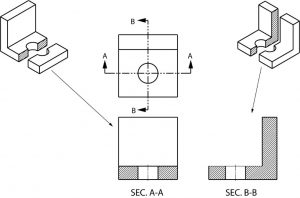
Sectional Views Basic Blueprint Reading
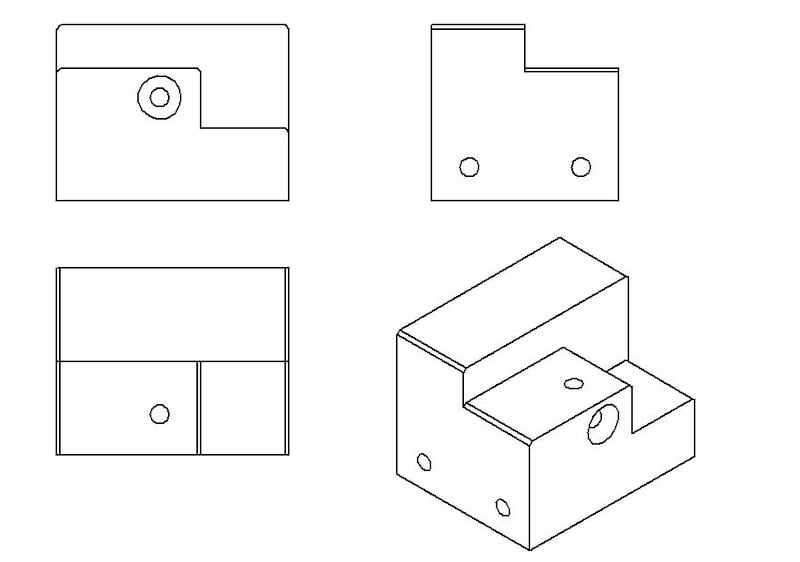
Engineering Drawing Views Basics Explained Fractory

Sectioning Technique Engineering Design Mcgill University
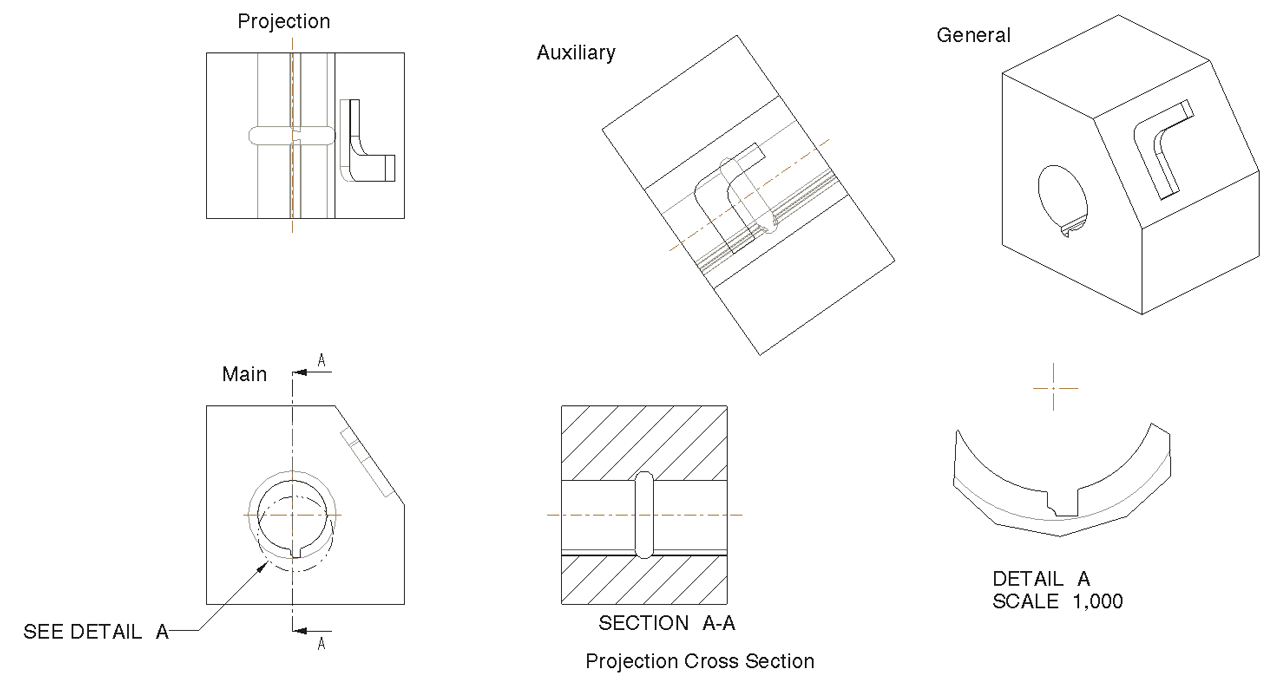
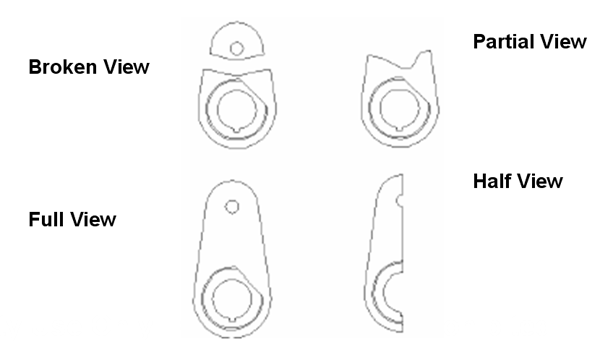
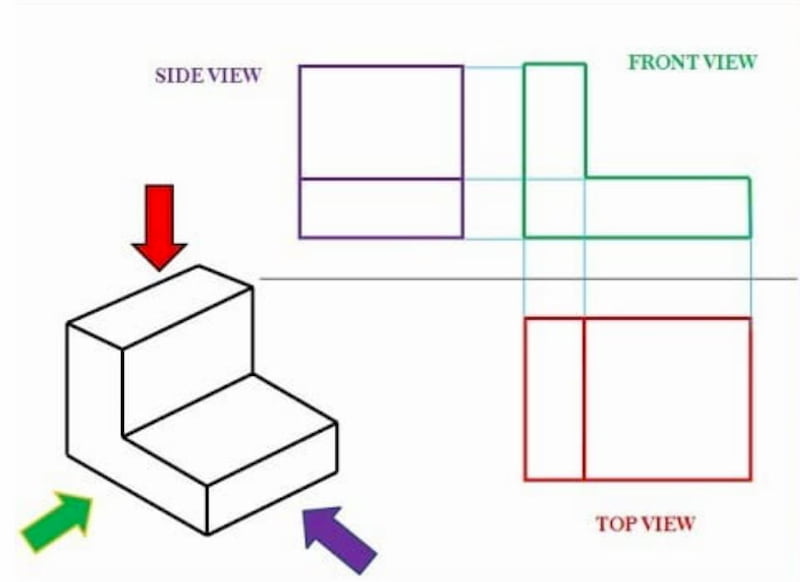
0 comments
Post a Comment